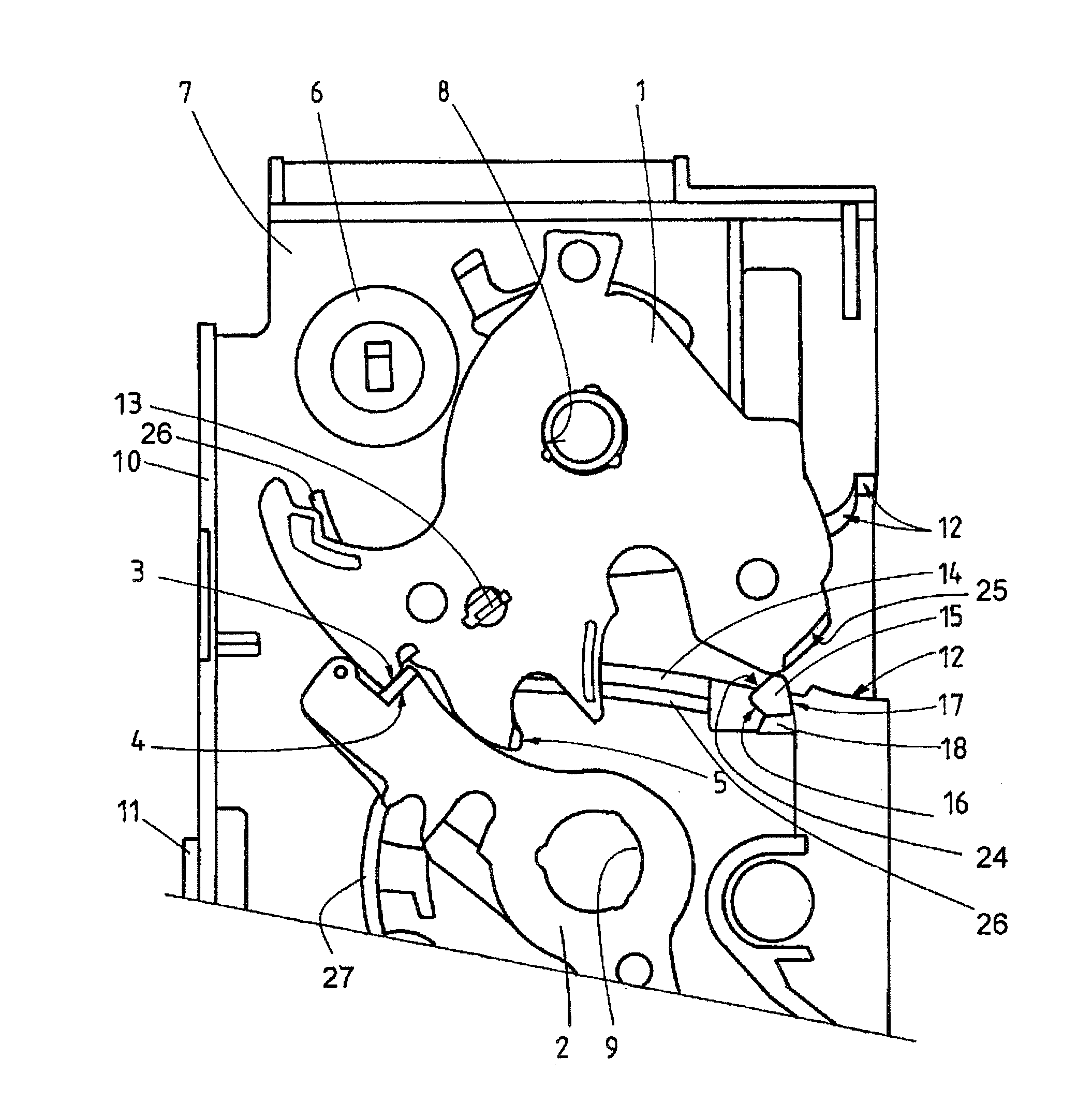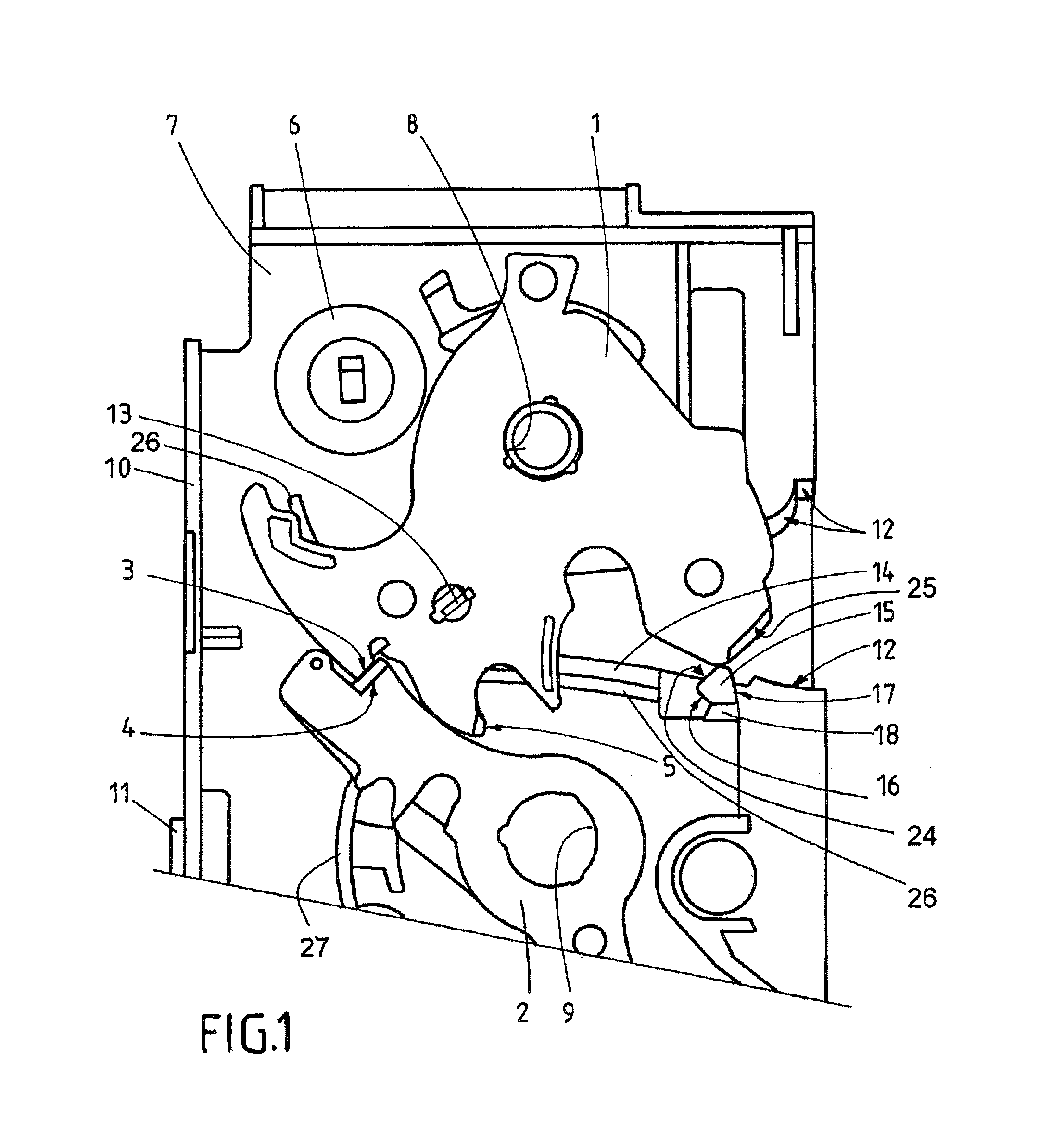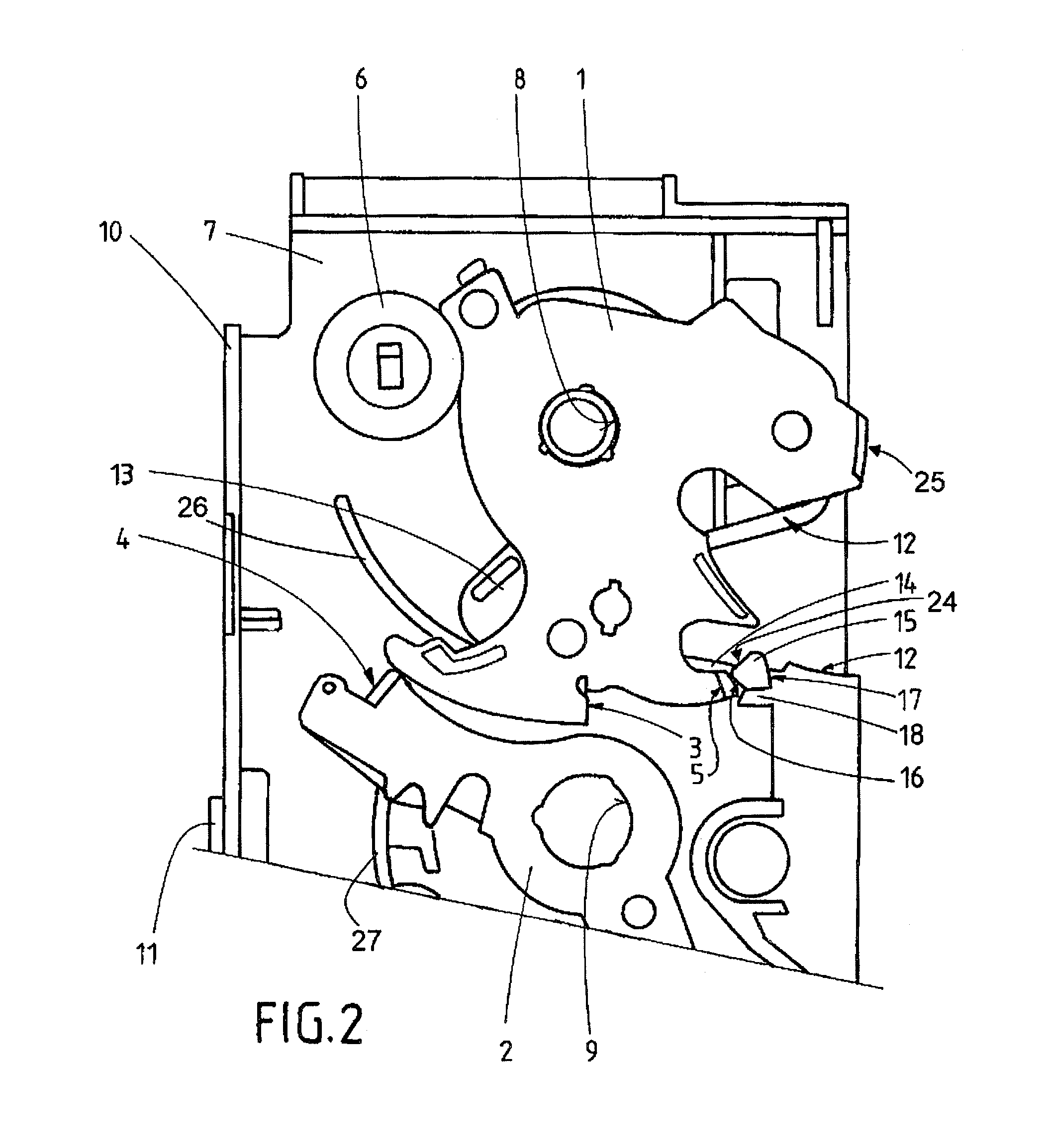Motor vehicle door lock
a technology for motor vehicles and door locks, applied in the field of motor vehicle door locks, can solve the problems of increased opening force and difficult actuation of the catch mechanism, and achieve the effect of preventing dust from entering
- Summary
- Abstract
- Description
- Claims
- Application Information
AI Technical Summary
Benefits of technology
Problems solved by technology
Method used
Image
Examples
Embodiment Construction
[0027]FIG. 1 shows a catch mechanism with a rotatably mounted rotary latch 1 and a rotatably mounted pawl 2. In FIG. 1, the catch mechanism is in the intermediate closed position. A metal blocking surface 3 of the rotary latch 1 is pressed against a metal blocking surface 4 of the pawl 2. The rotary latch 1 can therefore not be turned counter clockwise in the opened position.
[0028]The rotary latch 1 contains a further metal blocking surface 5, pressed against the blocking surface 4 of the pawl 2 in the fully closed position. Where the rotary latch 1 shown in FIG. 1 is turned further in clockwise direction, the catch mechanism finally assumes this fully closed position. A stop 6 formed by a ring made from elastic material, limits the rotary movement of the rotary latch 1 in clockwise direction as well as in counter-clockwise direction, as shown in FIG. 2.
[0029]A wall 7 of a plastic lock housing is located below the rotary latch 1 shown in FIG. 1. Below this plastic wall 7 a metal and...
PUM
 Login to View More
Login to View More Abstract
Description
Claims
Application Information
 Login to View More
Login to View More - R&D
- Intellectual Property
- Life Sciences
- Materials
- Tech Scout
- Unparalleled Data Quality
- Higher Quality Content
- 60% Fewer Hallucinations
Browse by: Latest US Patents, China's latest patents, Technical Efficacy Thesaurus, Application Domain, Technology Topic, Popular Technical Reports.
© 2025 PatSnap. All rights reserved.Legal|Privacy policy|Modern Slavery Act Transparency Statement|Sitemap|About US| Contact US: help@patsnap.com



